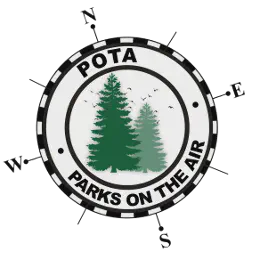
Portable operations
Table of Contents
These are all ham radio (amateur radio) programs and activities that involve portable or special-location radio operations. Each has a unique focus, and operators participating in these programs often receive awards or recognition for their efforts.
Personally, I love them all :)
POTA (Parks on the Air)
- Concept: POTA encourages amateur radio operators to set up and operate from state, national, and regional parks worldwide.
- Objective: Promote outdoor portable operation while raising awareness of protected natural areas.
- How it Works:
- Activators: Operators who go to a designated park and make contacts.
- Hunters: Operators who contact the activators from home or mobile stations.
- Recognition: Activators and hunters can earn awards for contacting a certain number of parks or making a certain number of contacts.
SOTA (Summits on the Air)
- Concept: SOTA focuses on operating amateur radio from mountain summits or high elevations.
- Objective: Encourage portable operation in mountainous areas while promoting outdoor activity and hiking.
- How it Works:
- Activators: Hikers who carry radio equipment to designated summits and make contacts.
- Chasers: Operators who contact activators from home or other locations.
- Scoring: Summits are assigned points based on altitude, with higher elevations offering more points.
IOTA (Islands on the Air)
- Concept: IOTA is about operating amateur radio from islands around the world.
- Objective: Encourage radio operators to contact and activate islands, particularly those in remote locations.
- How it Works:
- Activators: Operators who travel to islands and make contacts.
- Chasers: Operators who work from home or elsewhere and contact island activators.
- Recognition: Awards are given for contacting different island groups.
RaDAR (Rapid Deployment Amateur Radio)
- Concept: RaDAR is a more tactical and dynamic approach to portable ham radio, requiring operators to move between locations after making a set number of contacts.
- Objective: Encourage mobility and quick-deployment radio operation under field conditions.
- How it Works:
- Operators must make five contacts before moving to a new location.
- Movement must be done on foot, bicycle, kayak, or another non-motorized means (except under specific circumstances).
- Unique Challenge: It simulates emergency or military-style rapid deployment operations.
ILLW (International Lighthouse and Lightship Weekend)
- Concept: ILLW involves amateur radio operation from or near lighthouses and lightships.
- Objective: Promote awareness of maritime heritage and encourage ham radio activity at historical maritime locations.
- How it Works:
- Operators set up stations at lighthouses or former lightship locations.
- The event is typically held annually in August.
- Recognition: Participants can earn awards for activating or contacting multiple lighthouses.
Are there any others? Indeed, but they don’t receive the same degree of attention that those mentioned herein. Other operations are BOTA (beaches on the air) and COTA (castles on the air).
